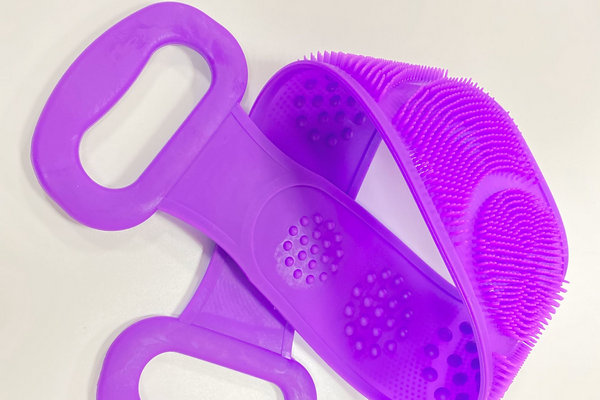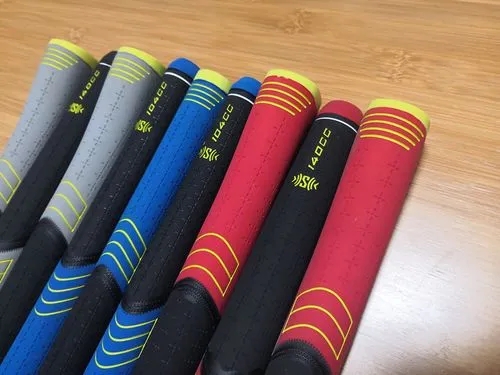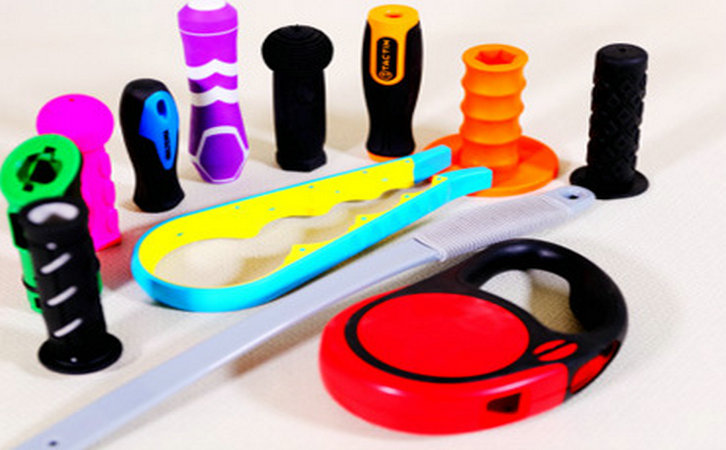Late at night, when tossing and turning keeps sleep at bay, I often find myself reflecting on my years immersed in the world of TPE (Thermoplastic Elastomer). As a seasoned professional with over a decade in the TPE industry, I’ve developed a deep affection for this wonderfully soft yet resilient material. In recent years, TPE zero-pressure pillows have taken the sleep world by storm, celebrated for their “zero-pressure” comfort, breathability, and ability to cradle the neck for a restful night. But how does a humble pile of raw materials transform into a pillow that feels like a sleep miracle? Today, I’m excited to take you behind the scenes as a materials engineer, walking you through the making of a TPE zero-pressure pillow—from formulation to molding—sharing my insights and stories to reveal the craft and science that bring this bedtime hero to life.
Table of Contents
ToggleWhat Is a TPE Zero-Pressure Pillow?
Before we dive into the manufacturing process, let’s unpack what makes a TPE zero-pressure pillow special. These pillows, primarily made from TPE gel or high-elasticity TPE, are designed to be soft, breathable, and slow-rebounding, evenly distributing pressure from the head and neck to reduce tossing and turning for better sleep. Compared to traditional memory foam or latex pillows, TPE zero-pressure pillows offer unique benefits:
Zero-Pressure Feel: TPE’s slow-rebound property adapts to head and neck contours, minimizing pressure points.
Breathability: Often featuring honeycomb or mesh structures, TPE pillows dissipate heat quickly, ideal for sweaty sleepers.
Durability: TPE outperforms latex in aging resistance, resisting deformation or crumbling.
Easy Maintenance: TPE’s smooth surface allows some models to be washable, ensuring hygiene.
Crafting a TPE zero-pressure pillow that delivers on comfort involves intricate formulation, processing, and structural design—it’s far from a simple task. Below, I’ll break down the process into raw material preparation, formulation design, processing techniques, molding methods, and post-processing.

The Manufacturing Process of a TPE Zero-Pressure Pillow
1. Raw Material Preparation: Building the Foundation
The journey of a TPE zero-pressure pillow begins with selecting high-quality raw materials. TPE is a block copolymer with hard segments (like styrene) and soft segments (like butadiene or polyolefin), with SEBS-based and TPU-based variants being common. For zero-pressure pillows, high-molecular-weight SEBS-based TPE is preferred for its elasticity, slow rebound, and soft touch.
Key Raw Materials:
SEBS Base: Provides elasticity and softness, with a molecular weight of 100,000-200,000 to ensure slow rebound.
Plasticizers: Such as white oil, used to reduce hardness and enhance flexibility, typically at 30%-50%.
Fillers: Like calcium carbonate, added to control costs but kept below 10% to preserve elasticity.
Additives: Including antioxidants (e.g., 1010), UV absorbers, and color masterbatches to improve durability and aesthetics.
Quality Control: Raw materials must be tested for Melt Flow Index (MFI) and moisture content. I aim for an MFI of 1-5 g/10min and moisture below 0.1% to ensure processing stability.
Drying: TPE is hygroscopic, so it’s dried at 80°C for 4 hours before processing to prevent bubbles or surface defects.
My Experience: Once, a client reported tiny bubbles on a pillow’s surface, which we traced to moist raw materials. After tightening the drying process, the issue vanished. Never skip the raw material “health check”!

2. Formulation Design: Balancing Softness and Support
The comfort of a TPE zero-pressure pillow hinges on its formulation. Different hardness, elasticity, and breathability requirements demand precise component ratios. Here’s my go-to formulation framework:
| Component | Proportion (wt%) | Role | Notes |
|---|---|---|---|
| SEBS | 40%-60% | Provides elasticity and slow rebound | Use high-molecular-weight SEBS for 2-3 second rebound |
| White Oil | 30%-50% | Lowers hardness, boosts softness | Excess oil risks exudation, reducing durability |
| Fillers | 0%-10% | Cuts costs, fine-tunes hardness | Too much compromises elasticity and comfort |
| Antioxidant | 0.2%-0.5% | Prevents aging | Test per ASTM D573 |
| Color Masterbatch | 1%-3% | Adjusts color | Ensure TPE compatibility to avoid discoloration |
Hardness Tuning: Zero-pressure pillows typically have a hardness of Shore 00 20-40, adjusted via plasticizer levels. Too soft (<20) lacks support; too hard (>40) loses the zero-pressure feel.
Rebound Timing: Ideal pillows rebound in 2-3 seconds, controlled by SEBS molecular weight and white oil content. Higher molecular weight SEBS yields slower rebound, perfect for premium products.
Compatibility: White oil must be highly compatible with SEBS. I use low-aromatic white oil to prevent exudation or odors.
Real-World Case: A client requested an ultra-soft zero-pressure pillow, so I bumped white oil to 45%, but the surface felt slightly tacky. Dialing it back to 40% and adding 0.5% lubricant fixed the texture, earning rave reviews.
3. Processing Techniques: From Raw Materials to Melt
TPE zero-pressure pillows are typically made using injection molding or foam molding, with twin-screw extruders (for compounding) or injection machines (for molding) as key equipment. Processing techniques directly impact pillow uniformity and performance.
Twin-Screw Extrusion Compounding:
Equipment: Use a twin-screw extruder with an L/D ratio of 40:1 for thorough mixing of TPE and additives.
Screw Configuration: Include 2-3 sets of 45°-60° kneading blocks to enhance shear and dispersion, ensuring white oil blends seamlessly with SEBS.
Process Parameters:
| Parameter | Recommended Settings | Notes |
|---|---|---|
| Barrel Temperature | 160-200°C | Feed zone at 150°C, metering at 180-190°C to avoid degradation |
| Screw Speed | 200-300 rpm | High speeds risk chain scission; low speeds reduce mixing |
| Back Pressure | 0.5-1.5 MPa | Improves melt uniformity |
Filter Screens: Use 80-120 mesh screens to remove impurities and enhance melt quality.
Pelletizing: The compounded TPE melt is water-cooled and pelletized, with cooling water at 20-30°C.
My Insight: Screw configuration is the “soul” of compounding. Once, a pillow had tiny internal granules due to insufficient kneading blocks. Adding a 60° block set improved melt uniformity significantly.

4. Molding Methods: Shaping the Zero-Pressure Structure
Molding is the heart of TPE zero-pressure pillow production, with injection molding and foam molding as the main techniques, chosen based on design needs.
Injection Molding (for honeycomb or mesh structures):
Mold Design: Molds feature honeycomb or perforated patterns for breathability. Surfaces are polished to Ra 0.2-0.4μm for a smooth finish.
Injection Machine: Use servo-driven injection machines for precise pressure and speed control.
Process Parameters:
| Parameter | Recommended Settings | Notes |
|---|---|---|
| Barrel Temperature | 170-210°C | Nozzle at 190-200°C to prevent overheating |
| Mold Temperature | 30-50°C | High temps cause sticking; low temps mar surfaces |
| Injection Pressure | 50-100 MPa | Multi-stage injection, starting low for 80% fill |
| Cooling Time | 20-40 seconds | Adjust for pillow thickness to ensure full curing |
Venting: Molds need 0.02-0.05mm vent slots to prevent bubbles or scorching.
Foam Molding (for lighter pillows):
Foaming Agents: Use chemical agents (e.g., AC) or physical agents (e.g., CO2), targeting a foam expansion ratio of 1.2-1.5 for softness and support.
Equipment: Employ low-pressure foam injection machines for uniform foaming.
Key Techniques: Maintain foaming temperature at 180-200°C to avoid oversized pores or collapse.
Real-World Case: During a trial for a honeycomb-structured pillow, flow marks appeared due to low mold temperature. Raising it to 45°C and optimizing multi-stage injection yielded a mirror-smooth surface.

5. Post-Processing and Quality Control: Perfecting the Product
After molding, TPE zero-pressure pillows undergo post-processing and rigorous testing to meet quality standards.
Post-Processing:
Trimming: Remove mold parting lines or flash using laser cutting or manual trimming for smooth edges.
Cleaning: Wash the pillow surface with neutral detergent and warm water to remove oils or residues, then air-dry before packaging.
Surface Treatment: Some premium models apply a hydrophilic coating for enhanced touch, ensuring coating-TPE compatibility.
Quality Control:
Hardness Testing: Use a Shore 00 durometer to confirm hardness of 20-40.
Rebound Testing: Press the pillow and measure rebound time (2-3 seconds is ideal).
Compression Set: Per ASTM D395, ensure deformation after compression is <5%.
Odor Testing: Verify no irritating odors, compliant with REACH regulations.
Breathability: Test air circulation in honeycomb structures under simulated sleep conditions.
Lesson Learned: Early on, I overlooked quality checks, resulting in pillows with overly long rebound times. Introducing hardness and rebound tests boosted product consistency.
Key Considerations in TPE Zero-Pressure Pillow Production
Making a TPE zero-pressure pillow seems straightforward but is full of nuances. Here are some pitfalls to avoid:
Raw Material Consistency: SEBS MFI can vary across batches, requiring testing each time. I recommend long-term supplier contracts for batch stability.
White Oil Exudation: Excess white oil (>50%) or poor quality causes tackiness. Use high-purity white oil and validate with aging tests.
Mold Maintenance: Scratched mold surfaces affect pillow appearance. Polish molds quarterly to maintain Ra 0.2-0.4μm.
Foaming Control: In foam molding, uneven pore sizes weaken support. Precisely control foaming agent dosage and temperature.
Regulatory Compliance: Ensure TPE pillows meet RoHS and REACH standards, avoiding banned plasticizers or heavy metals.
My Story: During a foam TPE pillow trial, excessive foaming agent led to oversized pores and collapse. Adjusting the foam ratio to 1.3 fixed the issue, teaching me the value of precision.
Common Issues in TPE Zero-Pressure Pillow Production Summarized
Here’s a table of common issues and solutions for quick reference:
| Issue | Possible Cause | Solution |
|---|---|---|
| Surface bubbles or defects | Moist materials or poor mold venting | Dry TPE (80°C, 4 hours), add 0.02-0.05mm vent slots |
| Overly long/short rebound | Improper SEBS molecular weight or white oil ratio | Use high-molecular-weight SEBS, adjust white oil to 40%-45% |
| Tacky surface | White oil exudation or insufficient lubricant | Use high-purity white oil, add 0.5% lubricant (e.g., EBS) |
| Uneven hardness | Poor compounding or excessive fillers | Increase kneading blocks, reduce fillers to 5%-10% |
| Poor breathability | Suboptimal honeycomb design | Optimize mold for larger pores or denser mesh |
Applications and Future of TPE Zero-Pressure Pillows
Thanks to their comfort and eco-friendliness, TPE zero-pressure pillows are used in:
Home Sleep: Ideal for neck discomfort or those seeking premium sleep quality.
Medical Recovery: Supports cervical rehabilitation or bedridden patients by reducing pressure points.
Travel and Portability: Lightweight TPE pillows suit travel or office naps.
Infant Products: Low-hardness TPE pillows are safe and non-toxic for babies.
With growing consumer focus on sleep health, TPE zero-pressure pillows have bright prospects. According to Statista, the global sleep products market is projected to reach $50 billion by 2027, with TPE pillows poised to shine as an industry leader.

Frequently Asked Questions
Here are some common questions and answers to round out your understanding:
Q1: How do TPE zero-pressure pillows compare to memory foam?
A: TPE pillows are more breathable, durable, and washable, with better aging resistance. Memory foam has a slower rebound, suiting those who love a sinking feel, but it traps heat. Choose based on sleep preferences and climate.
Q2: Why is my TPE pillow slightly tacky?
A: Likely white oil exudation or insufficient lubricant in the formula. Contact the manufacturer to verify the formulation or clean the surface and apply a light dusting of talcum powder (test first). Persistent tackiness warrants a replacement.
Q3: Are foamed TPE pillows better than injection-molded ones?
A: Foamed TPE pillows are lighter with slightly better breathability but may have weaker support. Injection-molded (mesh-structured) pillows are more durable, ideal for firm support seekers. It depends on your sleep habits.
Q4: How do I assess TPE zero-pressure pillow quality?
A: Check hardness (Shore 00 20-40), rebound time (2-3 seconds), and odor (non-irritating). Press to test breathability—quality pillows dissipate heat quickly without feeling stuffy.
Q5: Can TPE zero-pressure pillows be washed?
A: Most support hand-washing with warm water, but check product instructions. Air-dry naturally, avoiding sun exposure or dryers to prevent deformation.
Final Thoughts
Crafting a TPE zero-pressure pillow is like weaving a delicate balance between softness and support. As a TPE devotee, I’m endlessly fascinated by the artistry behind this technology. From raw pellets to a neck-cradling sleep companion, every step reflects the ingenuity of materials science and the dedication of its makers. I hope this deep dive into the production process has sparked your curiosity and enriched your appreciation for sleep health. If you’ve got more questions about pillows or materials, drop a comment—let’s unravel the wonders of this world together!
